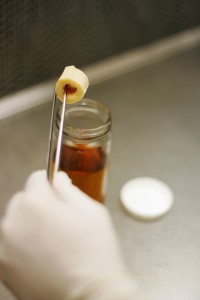The International Organization for Standardization (ISO) hosted the Sterilization of Health Care Products Committee meeting (ISO Technical Committee 198) to update the worldwide standards used for testing and validating medical devices.
Australia was the site of this year’s meeting. I attended and served as a delegate from the United States to provide input to several documents. As part of the U.S. delegation, I contributed to discussions surrounding ISO 18362 for aseptic processing as well as ISO 11737-1 for microbiological methods.
ISO 18362 is a document detailing the minimum requirements for manufacturing cell-based health care products which are not terminally sterilized. Before attending the ISO meeting, my fellow U.S. delegates and I met to discuss and submit comments about the current document, and what we would like to see changed. We had mostly editorial comments rather than technical changes to the standard at this meeting.
This standard will help companies navigate the complexities of processing tissues and cells in a way that controls microbial contamination. Tissues and cells often cannot be sterilized by traditional means without affecting their functionality and thus are forced into an aseptic processing scenario.
This ISO 18362 document will go out for a Draft International Standard (DIS) vote. After approvals and edits, and a final vote, the new ISO standard will be implemented.
We also discussed the revision of the standard for testing and validating product bioburden—standard ISO 11737-1. While we will likely not include any new requirements in this revision, we are adding more guidance to assist manufacturers in setting up tests and interpreting bioburden data.
For example, we are including better guidelines for determining the advantages and disadvantages to pooling multiple samples into one bioburden test when there is low contamination on a device, as opposed to using a different sample for every test.
The revision to the ISO 11737-1 standard is a result of questions we frequently receive from people unfamiliar with bioburden testing. The standard has addressed some of these questions previously but without much or any detail. A new draft of the standard should be sent out for a first review later in the year.



